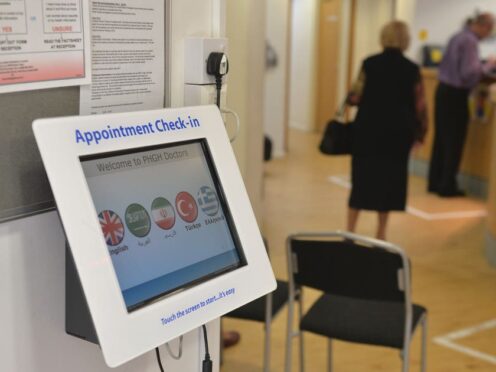Seeing the same family doctor could help people live longer, according to a study.
Living in areas of England with more fully qualified GPs and better-funded surgeries also had a positive impact on life expectancy, researchers found.
Academics from the University of Leicester explored the impact of general practice on how long people live amid what they described as a decline in access and continuity of care.
They analysed life expectancy data in the National General Practice Profiles system using 16 models, including population characteristics relating to deprivation, ethnicity and the number of patients on the diabetes register, NHS payments per registered patient, and the percentage of patients seen on the same day.
The findings, published in the British Journal of General Practice, indicated that deprivation and geography were “powerful predictors of life expectancy”.
More funding and a higher number of GPs were “associated with higher life expectancy”, although the number of GP registrars, receptionists and advanced nurse practitioners (ANPs) were not.
Other nursing staff, excluding ANPs, predicted lower life expectancy, according to the study.
This reflects “the employment of more practice nurses per unit of population in deprived localities”, researchers said.
The researchers said: “The number of GPs, continuity of care, and access in England are declining, and it is worrying that these features of general practice were positively associated with life expectancy.”
In January, figures from the Office for National Statistics (ONS) covering England, Wales and Northern Ireland, revealed estimated life expectancy at birth had fallen in most local areas, with the reduction down to the impact of the Covid-19 pandemic.
In 2020 to 2022, the average was 78.6 years for males and 82.6 years for females, down by 38 weeks and 23 weeks respectively when compared with 2017 to 2019.
The figures also reflected a regional divide, with areas in southern England dominating the list for the highest life expectancy at birth.
No areas in the south appear in the top 10 for lowest life expectancy.
Professor Kamila Hawthorne, chairwoman of the Royal College of GPs, said: “This timely study highlights factors which frontline GPs have witnessed for years: continuity of care is closely linked to patient health, and areas with higher deprivation generally have lower life expectancy.
“We know that continuity of care is beneficial and highly valued by our patients, particularly those with complex health needs. It allows us to build trusting relationships with our patients and gain a greater holistic picture of their overall health.
“But we simply don’t have enough GPs to deliver the care that all patients deserve, and the impact of this is much more acute in more deprived areas.
“We need to ensure GPs and our teams can deliver the continuous care our patients need now, and in the future, by guaranteeing that we’re properly resourced and funded.”
